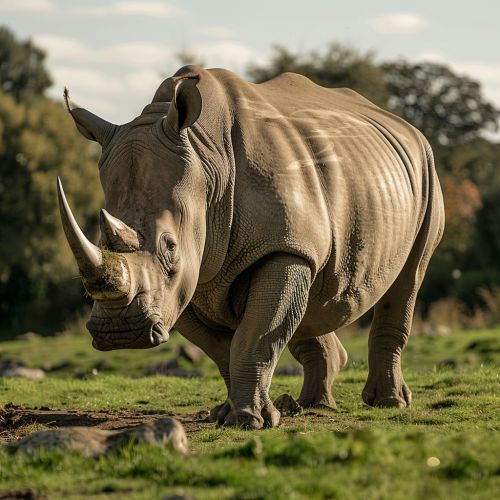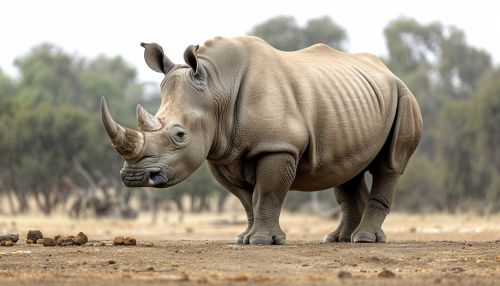Rhinocerotidae
Taxonomy and Evolution
The family Rhinocerotidae, commonly known as rhinoceroses, belongs to the order Perissodactyls, a group of odd-toed ungulates. The family is characterized by large size, a herbivorous diet, and a thick protective skin formed from layers of collagen. The Rhinocerotidae family is divided into four extant genera: White Rhinoceros, Sumatran Rhinoceros, Indian and Javan Rhinoceros, and Black Rhinoceros.


The evolutionary history of Rhinocerotidae dates back to the Eocene epoch, approximately 50 million years ago. The first rhinoceros-like animals, members of the family Hyracodontidae, were small and lacked both the protective skin and horns of modern rhinoceroses. The rise of grasslands in the Miocene epoch led to the evolution of larger, grazing rhinoceroses, and the emergence of the characteristic horn.
Anatomy and Morphology
Rhinoceroses are among the largest remaining megafauna, with all species able to reach or exceed one tonne in weight. They have a herbivorous diet, small brains for mammals of their size, one or two horns, and a thick (1.5–5 cm) protective skin formed from layers of collagen positioned in a lattice structure. They generally eat leafy material, although their ability to ferment food in their hindgut allows them to subsist on more fibrous plant matter when necessary. Unlike other perissodactyls, the two African species of rhinoceros lack teeth at the front of their mouths, relying instead on their lips to pluck food.
Behavior and Ecology
Rhinoceroses have a reputation for being solitary animals, but they often have complex social structures. Males are generally solitary, but females often live in small groups with their young. They are also known for their territorial behavior, with males marking their territory with piles of dung and urine. Rhinoceroses have poor eyesight, relying more on hearing and smell to detect what is going on around them. They have a symbiotic relationship with oxpeckers and other birds, which eat ticks and alert them to danger.
Conservation
Rhinoceroses have been hunted by humans for their horns, a practice that has left many species critically endangered. The IUCN lists three of the species as being critically endangered. Various conservation initiatives, such as the establishment of protected areas and anti-poaching measures, have been implemented to protect these magnificent creatures. However, poaching for the illegal rhino horn trade continues to pose a significant threat.
